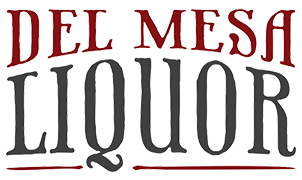Wine is regarded as the most passionate and meaningful alcoholic beverage. It offers supreme hospitality and the energizing power of memory. Creating the finished wine goes through several steps and a set of processes. Wine has a distinctive flavor and the ability to evoke memories.
These wines are aged, so you can drink them whenever you want and retain their warmth. Understanding the age of the wine and its place of origin is essential. We need to be aware of all the steps that are involved. Knowing a lot about wines and boasting about your expertise is admirable.
Most wines sold in the United States are made to drink immediately, without cellaring. However, some wine drinkers favor "laying wine down"—or aging bottles—to savor them after the flavors have changed.
Aging For Optimal Flavour
How do the flavors of wine change as it ages, and what happens to them? What wines need to be aged? The most crucial question is: Why do we even age wine? What you should know is provided below. There are several steps to take to figure out where it all began.
Let us explore the past. A young wine feels chalky and dry when you swallow it, but an aged wine will feel cozy and comforting. Therefore, aging a wine makes a difference like that. The aromas, colors, and flavors of wine typically alter as it ages in a bottle or barrel. Young wines are astringent; they taste bitter and make your mouth dry.
However, as they age, they soften and lose some of their acrid taste. An aged wine also develops a more pungent aroma, giving it a better overall flavor and aroma than a young wine. While an aged wine smells like leather and earth, a young wine will smell like ripe berries.
History of Wine Tasting
Wines have a long history that dates back to the Greeks. It has been said that the best wine is one that people enjoy drinking. Different people develop different preferences and taste buds when it comes to tasting wine.
Like wine itself, wine tasting is an ancient practice. Although the discovery of wine dates back to 12000 BCE, proper production only got underway in China in 9000 BCE. The more specific need for wine tasting had been sparked in the 1300s.
The wine tasting was crucial to ensuring the quality of wines before they were imported and traded. Until recently, wine tasting was only available to producers, sommeliers, and other business people. Currently, the wine is being tasted by the general public. So, wine tasting has a relatively recent history.
Quick Ways To Determine The Age And Origin of Wine

1. Color
To start, you can look at the color of the wine to determine what grape was used in it. Red wine is the main topic because, although it is true of white and red wines, it is more noticeable in reds, especially single-varietal wines.
Some grapes, such as Pinot Noir, Gamay, and Grenache, are light ruby or berry red. On the other hand, an opaque purple wine is more likely to be Syrah (Shiraz), Malbec, or Cabernet Sauvignon.
If you are interested, you can begin to decipher the entire color spectrum, which is an excellent reason to buy various wines at once and pour a glass each! However, the ends of any spectrum are the ones that are the simplest to notice.
2. Legs
The tiniest droplets of wine that form after swirling it around and stopping are known as the legs of wine. Our French wine instructor said that the portions of the wine grapes indicate whether the region was warm or cool. Legs are fascinating because they reveal information about the viscosity of the wine.
The fact that the droplets bead and flow more slowly down the glass indicates that the wine has a higher density, typically meaning a higher alcohol content. Wines with a higher alcohol content typically originate in warmer wine-growing regions, such as California, Australia, and the southernmost reaches of Italy and Spain.
During the growing season, the warmer climates enable grapes to reach higher sugar concentrations, which results in a higher alcohol content during the fermentation process. The wine produced in cooler temperatures, like those in Chile, Oregon, and Burgundy, typically has less alcohol and is less viscous.
3. Palate And Nose

Of course, distinguishing one wine from another depends on how it tastes and smells, which is why it is the most difficult task. Learning about the nuanced variations in grape varieties, stylistic variations between regions, distinctive blends, flavor personalities of specific vintners, and other topics requires intensive study.
Blind tasting is similar to detective work in that some clues are more accessible to spot and decipher than others, which makes it one of the more intriguing aspects of the process. Aromas and flavors can help you identify what a glass of wine is and is not while also pointing out what it is not. When you consider everything, it can help you gain a better understanding of that wine.
One thing I find helpful is some of the flavor/scent notes that are signatures of a specific grape. Here are a few examples that are easy to store away in your mind (bearing in mind there is also always a vital element of subjectivity with regards to smell and taste, and also many wines are blends, in which case you will detect scents and flavors from several different varietals:
- Your wine most likely contains Pinot Noir if you notice raspberry hints, especially when it is accompanied by a smell akin to a wet forest floor.
- Grenache has a propensity for strawberry aromas with undertones of warm spice.
- Merlot always conjures up images of plums, vanilla, and a hint of chocolate.
- You most likely have a glass of wine with Cabernet Sauvignon if you detect black currants, along with more earthy notes of tobacco, cedar, or even green bell pepper.
- Syrah (Shiraz)— It frequently exhibits an intriguing blend of highly dark, jammy fruit flavors with savory aromas of black pepper and savory herbs.
4. Smell

Bring the glass up to your nose while tilting it first. Consider the scents you are currently inhaling. Are they citrus notes, floral undertones, earthy mushroom notes, or a light minerality? Wine aromas reveal much about the grape variety, aging methods, vineyard location, oak treatment, and other factors.
When describing what you are smelling, it is easy to get bogged down in terminology, but remember that there are correct answers! Let us divide the aromas into three groups: primary, secondary, and tertiary aromas, to make this aspect of wine tasting easier to understand.
The grape variety and growing area determine the primary aromas. This is where fruit, herbal, or floral notes can be detected, such as the scent of rose petals in a Finger Lakes Gewürztraminer.
The fermentation process results in the production of secondary aromas; yeast used in the fermentation is the source of any aroma that resembles bread.
The aging process is where the tertiary aromas are produced. This includes any oak treatment, which, depending on the type of oak used, can result in a variety of scents, such as vanilla from French oak or cocoa from Hungarian oak.
Wine continues to evolve as it sits in the bottle. On the nose, young wine is more fruity than an older bottle, which may have more concentrated and earthy aromas. You can proceed to the most exciting stage of wine tasting after getting a good sense of the flavor of the different wines.
5. Look
The color of the wine, which will have some translucency to it as it is reflected off the surface of the glass, can also be seen. You can determine the age of the wine based on the color of this light or the color of the meniscus at the bottom of the glass.
The light refracting through a very young wine, three years old or younger, will have an inky and intense purple tint. When a wine ages, the light will become more ruby-red in color and get lighter as it ages—from 5 to 6 to even 8 or 9 years old.
When wine is a decade old or older, the red color changes to a very brick-like, less saturated (i.e., more translucent), red-brown, or even an amber-brown as the color particles and some of the tannins precipitate.
It is interesting to note that with white wine, darkness moves in the opposite direction; a very old white wine will be a deeper gold than a young white's high-light green or gold.

Final Words
In conclusion, determining the age of the wine and its origin requires more than just looking at the bottle and requires quite a bit of knowledge and experience.
However, if you take the time to learn about the different wine regions, study the characteristics of the grapes used in the wine, and pay attention to the taste and smell of the wine, you can get an idea of its age and origin. Determining the age of the wine and its origin without looking at the bottle is a valuable skill for any wine connoisseur, and with practice and dedication, you can become an expert at it.
 Log in
Log in
 My Wishlist
My Wishlist Reward Program
Reward Program Corporate Gifts
Corporate Gifts Customer Help
Customer Help


